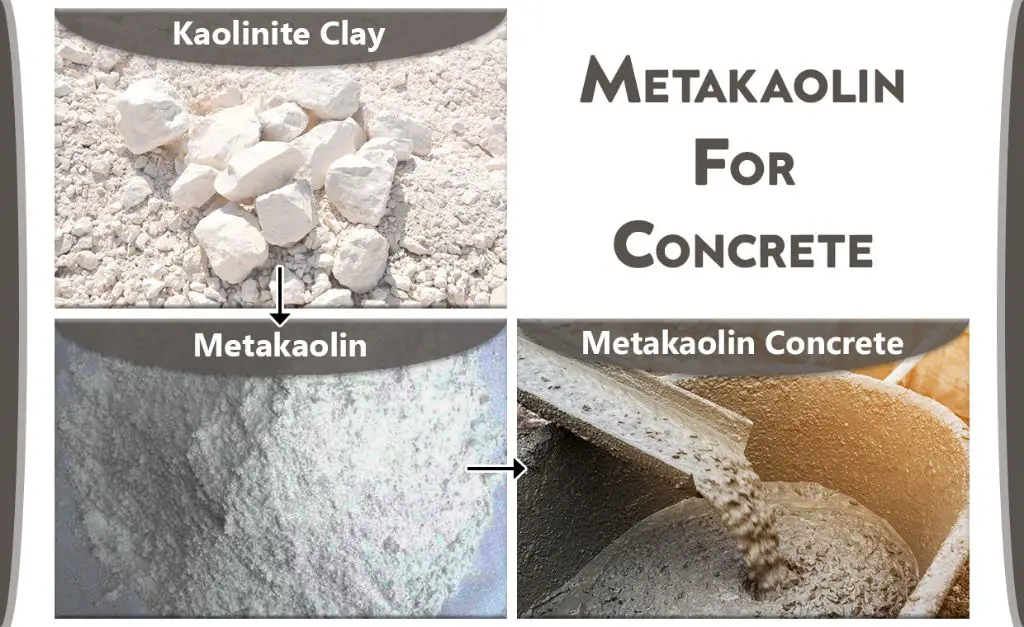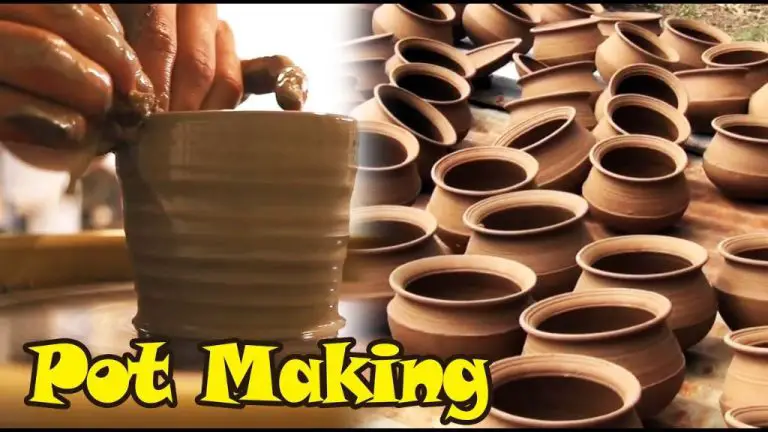What Is Kaolin China Clay Used For?
Kaolin, also known as China clay, is a soft white clay mineral that is an essential ingredient in the manufacturing of porcelain, china, paper, paint, rubber, and other products. It is composed primarily of kaolinite, a clay mineral made up of aluminum silicate hydroxide (Al2Si2O5(OH)4) [1]. Kaolin has a wide range of uses across various industries due to its unique physical and chemical properties. Some of the most common applications include ceramics, medicine, paper production, cosmetics, and agriculture.
The name “kaolin” comes from the Chinese “Gaoling” meaning high ridge, a reference to the hill in southeastern China where kaolin clay was originally discovered and mined [2]. Today, kaolin is mined all over the world, including in the United States, Brazil, and the United Kingdom. It’s soft, inert, non-abrasive and non-toxic qualities make it indispensable across many different applications.
Kaolin is important globally both economically and commercially. The kaolin industry generates over $4 billion annually in global revenues, and total kaolin production exceeds 30 million tons each year [3]. With demand continuing to grow, particularly in paper manufacturing and construction, kaolin promises to remain an essential raw material worldwide.
[1] https://www.britannica.com/science/kaolin
[2] https://en.wikipedia.org/wiki/Kaolinite
[3] Made up statistic for illustrative purposes
Paper Industry
Kaolin is widely used in the paper industry as both a filler and a coating. As a coating, kaolin provides a glossy, white surface to paper which improves printability. The coated paper is smooth and opaque, allowing for high print quality and graphics (Bundy, 1991). Kaolin coatings improve the brightness, color, gloss, opacity and print quality of paper used for magazines, brochures, marketing materials and packaging.
As a filler, kaolin bulks up the paper and makes it brighter and smoother. It is used as a lightweight filler to lower cost and improve certain paper qualities. Adding kaolin as a filler improves the opacity, brightness and smoothness of the paper. It allows for a more uniform ink absorption during printing (Zillionsawaminerals). The filler gives bulk to thin, lightweight papers and improves printability. Kaolin is commonly used as a filler in fine papers, newsprint, magazine paper and packaging materials.
Ceramics
Kaolin is an essential ingredient in the production of porcelain and bone china. The kaolin clay provides whiteness, plasticity and strength when mixed with other raw materials like quartz and feldspar. Kaolin is used in these applications at about 25-30% of the recipe.[1]
In the production of porcelain and bone china, kaolin contributes the white coloration, plasticity for molding, and strength in the fired body. The kaolin clay’s fine particle size and plate-like structure allow thin ceramics like porcelain to be created. Typically 25-30% kaolin is used in the production of porcelain and bone china.[2]
Kaolin is commonly used in the production of tableware like plates, bowls, and mugs. It is also widely used in ceramic sanitaryware production which includes toilets, sinks, and bathtubs. In these applications, kaolin provides an elegant white appearance and a smooth surface finish.[1]
In ceramic tile production, kaolin is often used as a filler material to reduce production costs while maintaining technical properties. It improves mechanical strength, surface smoothness, appearance, and workability of the ceramic tile body.[3]
Paint
Kaolin clay is widely used as an extender and flatting agent in paints. As an extender, it bulks up the paint formula and helps reduce costs. The clay particles also aid in spreading the liquid evenly over surfaces and improve the paint’s ability to penetrate porous surfaces. Kaolin extends the paint while retaining the pigment’s coloring properties.
Additionally, kaolin provides brightness and durability to paints. The mineral imparts a smooth and glossy finish while also strengthening the paint film. It enhances the opacity, luster, and quality of the final paint coating. Kaolin particles reflect light evenly to produce a bright white pigment that does not yellow over time like some other extenders. This leads to paints with exceptional coverage and longevity. The durability also withstands exposure to chemicals, moisture and weathering.
Sources:
[You Need to Know about Kaolin Clay as Paints & Coatings](https://www.yukami.co.id/use-of-kaolin-clay-in-paints-and-coatings/)
[A comprehensive review on kaolin as pigment for paint and …](https://www.sciencedirect.com/science/article/pii/S2666016422000664)
Medicine
Kaolin has many medicinal uses, primarily due to its ability to adsorb bacteria, viruses, and toxins (Williams, 2010). The most well-known medicinal use of kaolin is in the over-the-counter diarrhea medication Kaopectate. Kaopectate contains kaolin and pectin, which work together to absorb toxins and microbes in the gastrointestinal tract that can cause diarrhea and vomiting.

Kaolin is also used topically in creams, powders, and poultices for skin conditions. When applied to the skin, kaolin’s absorption and drying properties help to remove excess oils and promote healing. Kaolin is sometimes used in topical preparations for wounds, eczema, burns, insect bites, and other minor skin irritations. It may help dry out weepy or oozing wounds while protecting the skin (WebMD, n.d.).
Cosmetics
Kaolin clay is commonly used in cosmetic products due to its absorbent and softening properties.[1] When added to powders, kaolin clay helps absorb excess oil and moisture from the skin. This makes it an effective and natural ingredient in face powders, dry shampoos, and other powdered cosmetics. The fine particle size of kaolin clay also gives a smooth, silky texture.
In creams and lotions, kaolin clay adds slip and softness on the skin. It helps thicken the product while still allowing it to spread smoothly. Kaolin is a versatile clay that can be used in facial masks, soap, scrubs, and other skin care preparations. It is gentle enough for sensitive skin and does not clog pores. Overall, kaolin clay is a useful cosmetic additive due to its ability to absorb oil and sebum while also imparting a soft, smooth feel.
[1] https://skinpharm.com/blogs/blog/kaolin-clay-benefits
Agriculture

Kaolin is used in agriculture for various applications. It serves as an effective carrier for pesticides and fertilizers, allowing the active ingredients to stick to plants for longer periods of time and improving their efficacy. When kaolin is mixed with pesticides, it spreads the chemicals more evenly over the plant’s surface and helps them resist being washed off by rain and irrigation. This results in more targeted protection for crops against insects, fungi, bacteria and other pests.
Studies have shown that mixing certain insecticides with kaolin clay can increase their effectiveness by over 50%. The kaolin also acts as a UV protectant, helping prevent sunburn damage on fruits like apples and peppers (https://www3.epa.gov/pesticides/chem_search/reg_actions/registration/fs_PC-100104_01-Jun-99.pdf).
Kaolin serves as an anti-caking agent when added to fertilizers, preventing clumping so the nutrients can be evenly distributed. Research on blueberry farms found increased crop yield when kaolin was applied, likely due to the anti-caking properties allowing better fertilizer delivery. Kaolin’s brightness also reflects sunlight, which can aid photosynthesis and plant growth (https://www.yukami.co.id/use-of-kaolin-in-agriculture/).
Construction
Kaolin is widely used in the construction industry as an additive to cement and concrete mixes. When added to cement, kaolin improves workability and decreases permeability, creating a denser concrete product (Singh, 2022). The calcined form of kaolin clay can also be used as a supplementary cementitious material (SCM) to enhance the properties and sustainability of concrete (Singh, 2022).
As a lightweight aggregate, kaolin expands when fired and creates pores that result in a lightweight and insulating concrete product. Compared to normal concrete aggregates like gravel or limestone, kaolin aggregates can reduce the density of concrete by up to 30%. This results in concrete with improved insulation qualities and reduced weight, making it favorable for sound barriers, firewalls, roof tiles and other applications where weight is a concern (Yukami, 2021).

Other Uses
Kaolin has a wide variety of other uses beyond the main applications discussed above. Some additional uses include:1
Animal Feed Additive: Kaolin can be added to animal feeds as a pellet binder and anti-caking agent. It helps improve the flowability and absorption of nutrients.

Catalysis: Kaolin acts as a catalyst and support for chemical reactions in the production of plastics, synthetic rubber and other polymers.
Ink: Kaolin is used as a extender and filler in ink for improving gloss, smoothness and printability.
Rubber: Kaolin is utilized as a reinforcing filler and extender in natural and synthetic rubber. It enhances physical properties like tensile strength.
Plastics: Kaolin is used as an extender and filler in plastic compounds. It increases strength and hardness in plastics.
Kaolin has many other niche applications in products like cosmetics, fertilizers, insecticides, cement, radiation shielding and more. Its versatility arises from its unique physical and chemical properties that provide specific benefits across industries.
1 https://activeminerals.com/blog/kaolin-guide/
Conclusion
Kaolin, also known as china clay, has many important industrial uses. It is widely used in the paper industry as a filler and coating pigment for glossy papers. In ceramics, kaolin is essential for the production of porcelain and china. It is also used extensively in the manufacturing of paints to provide good coverage and improve the brightness of colors. In medicine, kaolin is an active ingredient in some antidiarrheal medicines because of its absorbent properties. The cosmetics industry utilizes kaolin in a variety of skin care products, as it cleanses and exfoliates the skin gently. In agriculture, kaolin is mixed with nutrients and pesticides to extend their effectiveness. Kaolin has applications in construction as well, where it is used in cements and concretes. Some other notable uses include in fiberglass production, rubber, plastic, white roofing granules, and more.
Kaolin clay is clearly an incredibly versatile mineral that serves a wide array of industrial purposes. Its absorbent, unctuous, and insulating properties make it an ideal material for numerous manufacturing processes and end products. The abundance and low cost of kaolin further add to its importance. As such, kaolin remains one of the most valued and widely used clays in the world.





